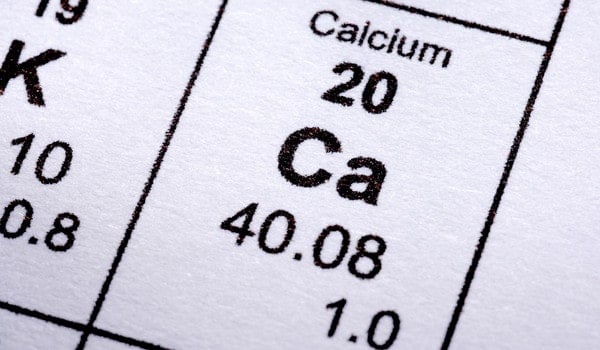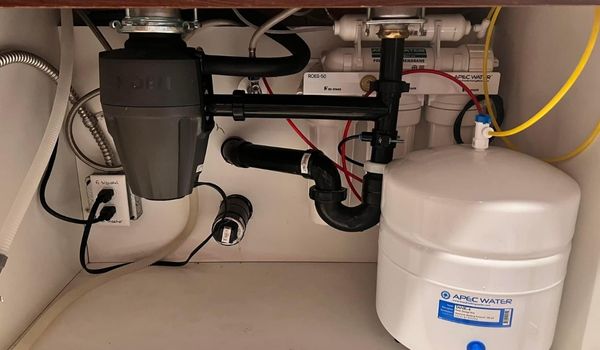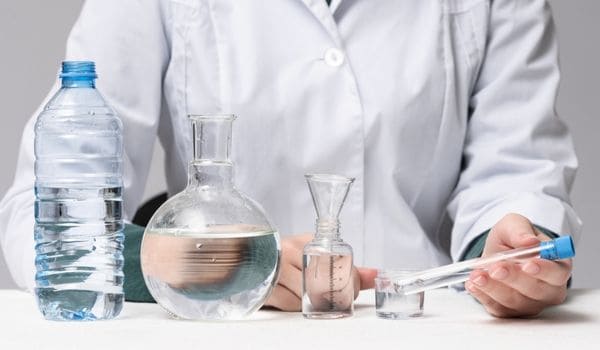If you’re hoping a whole-home water filter will remove calcium, the short answer is no.
Most standard filters aren’t designed to tackle hard water minerals like calcium or magnesium.
But don’t worry — there are better options if you’re tired of battling limescale and hard water problems at home. 🚿
🧠 Key Takeaways
- ✅ Standard whole-home water filters do not remove calcium from water.
- ✅ Water softeners are the most effective system for eliminating hardness minerals.
- ✅ Salt-free water conditioners can prevent scale without removing minerals.
- ✅ Reverse osmosis filters remove calcium — but only at a single tap, not whole-home.
- ✅ Reducing calcium helps protect plumbing, water heaters, skin, and laundry.
🛠️ Which Water Treatment Systems Actually Remove Calcium?

Not every water filter is built to handle calcium — and that’s why many homeowners get frustrated when hard water problems don’t go away.
Here’s a quick look at which systems actually remove calcium from water — and which ones just mask the effects. 🚿
| Method | Removes Calcium? | Notes |
|---|---|---|
| Standard Whole-Home Carbon Filter | ❌ No | Great for chemicals like chlorine, but won’t affect calcium. |
| Water Softener (Ion Exchange) | ✅ Yes | Best method for removing hardness minerals like calcium and magnesium. |
| Salt-Free Water Conditioner (TAC/NAC) | ⚡ No (but prevents scale) | Doesn’t remove calcium but prevents it from sticking to surfaces. |
| Reverse Osmosis System | ✅ Yes (Point of Use Only) | Removes calcium at a single tap (kitchen sink), not whole-house. |
| KDF-Enhanced Filters | ⚡ Slightly | Can remove trace calcium, but not enough to fix hard water issues. |
💬 Helpful Tip: If you’re mainly worried about limescale buildup — not necessarily removing calcium from your drinking water — a salt-free conditioner could still be a great low-maintenance option. But for true calcium removal, a water softener or RO system is the better bet.
💧 How Calcium Gets Into Your Water (and Why It Matters)

Most homeowners don’t think about calcium until they notice hard water stains or a drop in water pressure. But understanding how calcium enters your water — and when it becomes a problem — can help you choose the right solution faster. Here’s the quick version:
- How It Gets Into Water: Calcium naturally dissolves into water as rain and snowmelt erode mineral-rich rocks like limestone and gypsum.
- Is Calcium in Water Dangerous?: Not at all. Calcium in drinking water is safe and even supports bone health — it’s the same mineral found in supplements and antacids.
- When It Becomes a Problem: High calcium levels cause hard water, leading to stubborn stains, dry skin, higher utility bills, and clogged plumbing over time.
Bottom line: Calcium isn’t a health hazard — but it’s tough on your plumbing, appliances, and even your skin if you don’t treat it properly.
🛠️ Solutions to Remove or Manage Calcium in Water

Removing calcium from water isn’t one-size-fits-all.
Depending on whether you want to protect your whole house, improve your drinking water, or simply prevent limescale, you have a few solid options:
- ✅ Water Softeners (Best for Whole-Home Protection): Ion exchange systems that remove calcium and magnesium across your entire water supply, stopping hard water at the source.
- ✅ Reverse Osmosis Systems (Best for Drinking Water): Removes calcium at a single faucet — ideal if you’re mainly concerned about the quality of your cooking and drinking water.
- ✅ Salt-Free Water Conditioners (Best for Scale Prevention): Neutralizes minerals without removing them, helping to prevent limescale buildup on plumbing and appliances without using salt.
Good to Know: If your water is very hard (over 15 grains per gallon), a traditional salt-based water softener offers the most reliable long-term fix.
For moderate hardness, a salt-free conditioner could be all you need — with less maintenance.
⚖️ Water Softeners vs Reverse Osmosis: Which One Do You Need?

Both – water softeners and RO systems improve water quality — However, they solve different problems.
- ✅ Water softeners remove calcium and magnesium across your entire home’s water supply. They protect plumbing, appliances, and make cleaning easier.
- ✅ Reverse osmosis systems purify water at a single tap, removing calcium along with other contaminants like chlorine, fluoride, and lead — but only for drinking and cooking.
If you want whole-home protection from hardness, a water softener is the better fit.
If you mainly want better drinking water from one faucet, a reverse osmosis system is a smart choice — or better yet, use both together for complete protection.
✨ The Benefits of Soft Water

Treating calcium with a softener or conditioner doesn’t just protect your pipes — it improves daily life across your home. Here’s what you’ll notice:
- ✅ Longer-lasting appliances and water heaters
- ✅ Lower power bills thanks to better energy efficiency
- ✅ Cleaner dishes, brighter laundry, and faster cleaning
- ✅ Healthier skin and hair after showers
- ✅ Less limescale buildup on fixtures and faucets
Pro Tip: Investing in soft water saves time, money, and frustration — and it usually pays for itself within a few years.
🧪 How to Test Your Water for Calcium

Before you buy a softener or filtration system, it’s a good idea to find out exactly how hard your water really is.
Skipping this step could leave you stuck with the wrong setup — or paying for equipment you don’t actually need.
Here’s a quick snapshot of your options: 🔍
| 🧪 Method | 🔍 What It Does | ⚡ Good To Know |
|---|---|---|
| Home Test Strips | Quickly measure hardness level in grains per gallon (gpg) or ppm. | Easy and affordable, but less precise than lab tests. |
| Laboratory Testing | Professional-grade water analysis (calcium, magnesium, iron, pH). | Best for private wells or if you want full water chemistry results. |
| Tap Score Mail-In Kits | Send samples to a certified lab for detailed contaminant and hardness report. | Accurate, DIY-friendly option — ideal for planning a full filtration setup. |
| City Water Reports | Public suppliers test regularly and publish water quality reports (CCR). | Good for baseline hardness info if you’re on municipal water. |
💧 Why Testing Matters

Testing takes the guesswork out of picking the right system.
Knowing your hardness level — whether it’s slightly hard or very hard — makes it easier to decide between a softener, a salt-free conditioner, or just a drinking water solution like RO.
Pro Tip: If your hardness is over 7 grains per gallon (gpg), a water softener is usually the smartest investment long-term.
❓ Frequently Asked Questions

Is there a salt-free way to treat hard water?
Yes — systems like TAC (Template Assisted Crystallization) conditioners change the way calcium behaves in your water.
They won’t take minerals out, but they make it much harder for scale to stick to pipes and appliances — a smart option if your water isn’t extremely hard.
👉 Learn more about different types of water filters.
Should I test my water for hardness before buying a system?
It’s definitely worth it. A quick hardness test can save you from picking the wrong setup — and it’s a lot cheaper than fixing plumbing problems later.
Is softening water really worth the cost?
For most homes, yes. Soft water helps your appliances last longer, cuts down your energy use, and makes day-to-day cleaning less of a chore — little things that add up fast.
Will a Brita or countertop filter remove calcium?
A little bit, but not enough to stop hard water damage. Brita filters can lower calcium levels slightly for drinking water, but they won’t fix scale buildup in pipes or appliances.
Is softened water safe for pets and gardens?
Mostly, yes. Softened water is fine for pets in small amounts, but if you’re worried about sodium, you might want to offer them untreated tap water instead. For gardens, it’s better to bypass the softener altogether and use raw tap water.
💬 Final Thoughts
Fixing calcium problems doesn’t have to be complicated — once you understand your water, the right solution becomes clear.
Whether you choose a softener, conditioner, or a combination system, small changes now can save you time, money, and frustration down the road. 🚿
 104 people found this helpful. Was this guide helpful to you?
104 people found this helpful. Was this guide helpful to you? 

